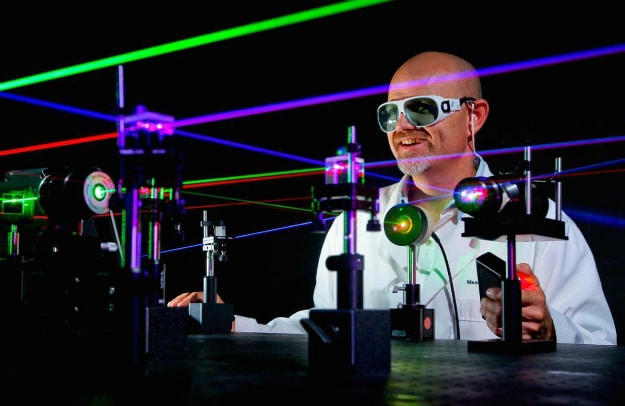LASER sounds like a modern word but here’s a surprising fact: it has a history dating back to the 1960s. As history would have it, the laser industry started blooming in the 1960s after the demonstration of the ruby laser by Theodore Maiman. It was about this time that the word “Lasers” became household name.
Many versions of laser surfaced in the market in those initial days. However, with advancing technology, laser technology has progressed like never before and is improving rapidly.
In the first half of the century, lasers went through amazing transformations. There’s a lot more to know about lasers than you might think…
Laser – Technical Details
Consisting of only one color of light, narrowed down into a narrow band of frequencies, laser light displays a property of monochromaticity. This word simply refers to the single color emitted by a laser.
Laser light travels in one direction and is concentrated in a narrow beam. Another interesting property displayed by laser is coherence. This means its waves travel in steps – one after the other as if they were marching in a band! Since laser travels in one direction, it can travel great distances and retain its intensity. A coherent wave of laser light is more powerful than from any single light wave.
Because of these properties, laser has proved itself useful in many instances. It is used to accurately measure for the purposes of surveying, missile tracking, and in 3D photography or holography.
Below are some of the industries in which laser plays a crucial role:
Medicine
It is used to destroy various types of cancer cells. In case of detached retinas in the human eye, laser helps seal them. It’s also used after cataract surgery in case the supportive membrane around the inserted lens turns milky. Besides this, laser is frequently used in medical machining and has brought medical advancements within reach.
Laser is also helpful in performing reconstructive and bloodless surgery. Furthermore, it’s highly useful as a cutting instrument since it has high-energy density.
Construction
In construction work, laser technicians may use the laser for measuring. It’s also used when mining and is helpful in terms of measuring, testing, surveying, and aligning.
Communications
In the field of Optical fiber communications, laser is used by many companies to send messages. That’s because numerous messages can be sent with low loss and high quality. It’s used to make, develop, and test products. Laser technicians also employ laser for designing, setting up, monitoring, and maintaining fiber fabrication.
Military And Space Projects
Low-power lasers are used by laser technicians to track, range, and identify targets.
Barcode Scanners
Many times, supermarket scanners use helium-neon lasers in order to scan universal barcodes. What happens is that a laser beam bounces off from a rotating mirror, scans the code, and then goes to a computer where all the information regarding codes is stored.
For scanning, the semiconductor laser may also be used.
Entertainment
You might have thought that laser is used at work only, but this is not true! [pullquote]Laser is proven to be brilliantly helpful in painting images with light so the next time you see an illustrious image floating in the air, you know where it’s coming from.[/pullquote] For this purpose, laser beams in the visible spectrum are used.
You might also notice there is some fog in the background. This involves bouncing laser beams against the set background of machine-produced fog. These displays are bedazzling to watch, and when projected on a dark sky they create a spectacular sight.
In the 1960s, people used to be dazzled by artists using laser in making “light paintings.” These have evolved these days and are a lot more common.
Metalworking
Laser technology is also valuable in the field of cutting and welding. The automobile industry, in particular, makes good use of lasers. Lasers have been developed that can power up to several kilowatts in order to run computer-controlled welding assembly lines, useful in many other industrial applications. Lasers can now easily cut through metals. Also, dissimilar pieces of metal can be welded together with the use of laser, something that was always challenging for more traditional welding equipment.
Lasers are now commonly mounted on robotic arms and then used in factories. As compared to acetylene, oxygen, and arc welding, laser welding is also safer.
The Bottom Line
A true wonder of modern science, laser, and the various laser machines are heavily used in diversified industries. This has led organizations to identify its usability in terms of manufacturing different products as well as medical treatments that are highly useful for humanity at large.
Alice McKenzie works as an optical systems engineer. She enjoys her work and likes to share her knowledge, but since friends and family become bored as soon as she mentions her job title, Alice has to go elsewhere – She now contributes to a selection of industry and business blogs.

COMMENTS